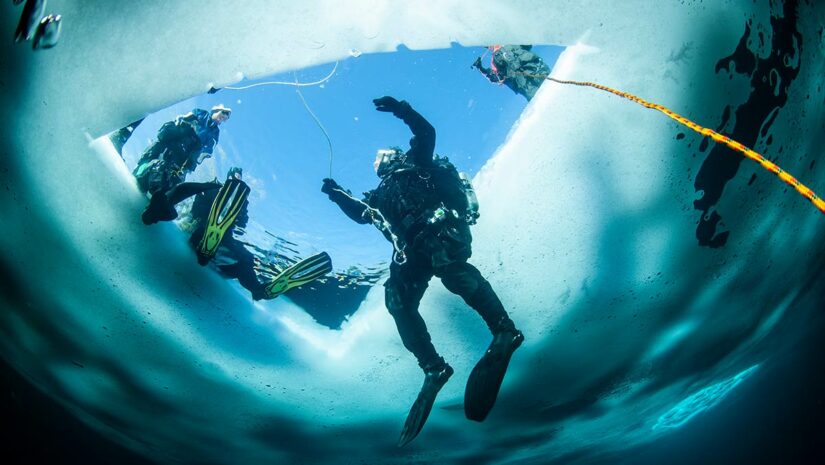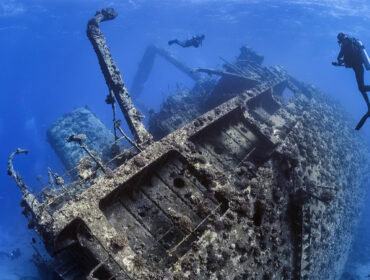For divers looking to explore colder waters or extend their dive times and depths, try drysuit diving. Here, a drysuit is an essential piece of equipment. Unlike wetsuits, which allow water to enter and rely on body heat for warmth, drysuits keep divers completely dry by sealing out water and using insulating layers to maintain body temperature.
Learning to dive in a drysuit requires specific skills and training, but it opens up a world of diving opportunities in colder climates. This guide covers everything you need to know about drysuit diving, including why you might need one, how it differs from a wetsuit, buoyancy control considerations, and why taking a drysuit specialty course is highly recommended.
Why Choose a Drysuit for Diving?
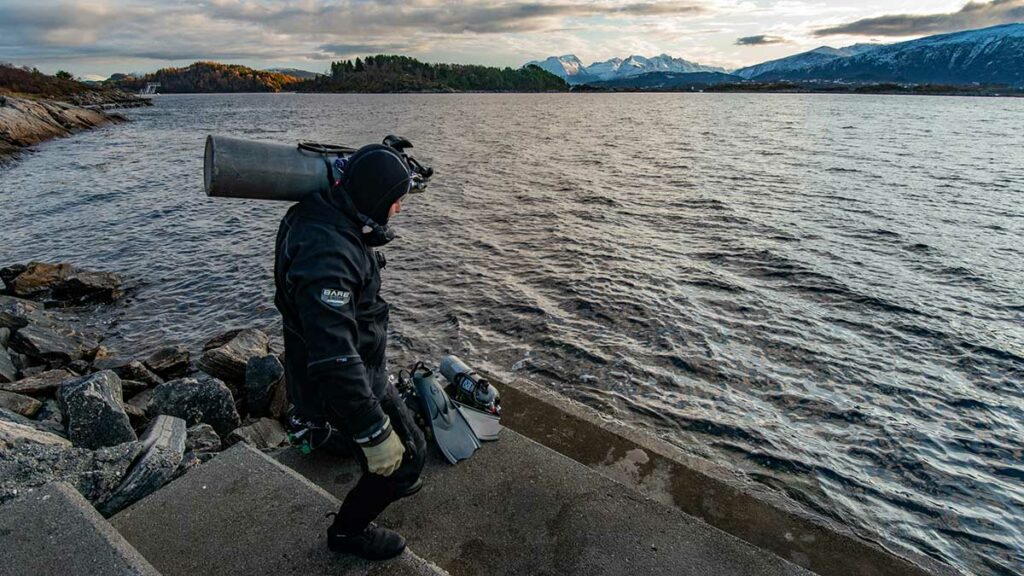
Diving in cold water presents unique challenges, and a drysuit is the best way to stay warm and comfortable. While wetsuits provide insulation by trapping a thin layer of water against the skin, they become less effective as temperatures drop. In waters below 15°C (59°F), even the thickest wetsuits may not provide sufficient warmth for extended dives, leading to discomfort or even hypothermia.
A drysuit allows divers to explore colder environments such as the fjords of Norway, the kelp forests of California, or the wrecks of the Great Lakes. It also enables year-round diving in regions where water temperatures fluctuate significantly between seasons. Technical and commercial divers also rely on drysuits for protection and thermal insulation during deep or long duration dives. Additionally, drysuits can be beneficial in contaminated water conditions, as they provide a barrier against pollutants.
How a Drysuit Differs from a Wetsuit
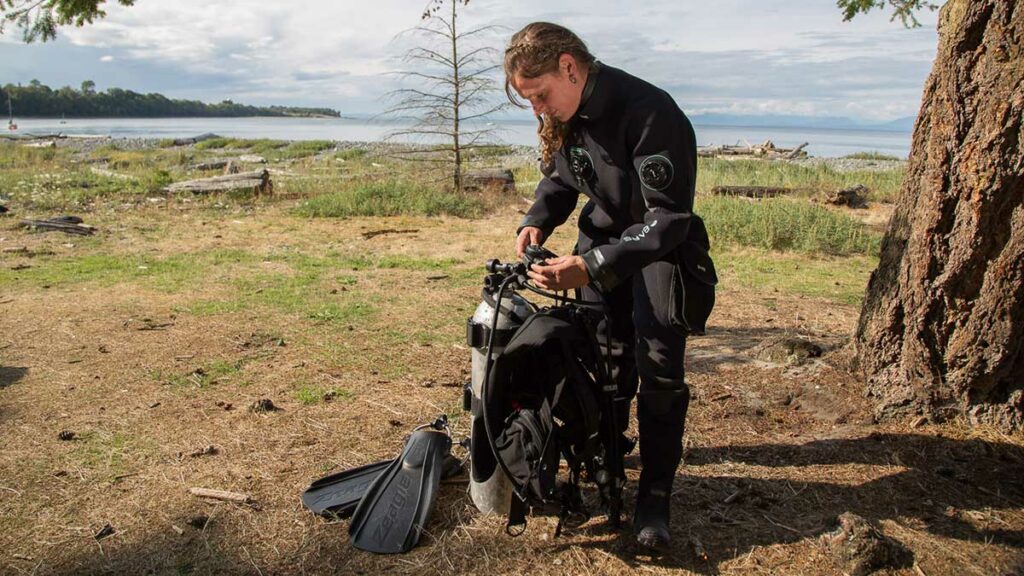
The primary difference between a drysuit and a wetsuit is how they handle water exposure and insulation. Wetsuits are made from neoprene, which traps a layer of water between the suit and the diver’s skin. The body warms this water, creating an insulating barrier. However, in very cold temperatures, the heat loss is too significant for this method to be effective.
Drysuits, on the other hand, are made from waterproof materials such as crushed neoprene, trilaminate, or vulcanized rubber. They feature watertight seals at the wrists and neck, along with a waterproof zipper, to keep water out completely. Instead of relying on water for insulation, drysuits allow divers to wear thermal undergarments beneath the suit to regulate warmth. This system provides better insulation and allows for longer, more comfortable dives in cold water.
Another key difference is buoyancy. While wetsuits compress at depth, reducing their insulating properties, drysuits maintain a constant volume, allowing for better thermal regulation. This also means that divers need to use air inside the drysuit to manage buoyancy, which requires additional training and practice.
Buoyancy Control with a Drysuit

One of the biggest adjustments for divers transitioning to a drysuit is learning how to control buoyancy. Unlike wetsuit diving, where buoyancy is primarily managed with a BCD (Buoyancy Control Device), drysuit divers must also account for the air inside their suit.
Drysuits have an inflator valve on the chest, which allows divers to add air to prevent suit squeeze as they descend. The suit also has an exhaust valve, typically on the upper arm, which releases air as the diver ascends. Proper use of these valves is crucial for maintaining neutral buoyancy and avoiding uncontrolled ascents.
Managing air distribution within the suit is another key skill. If too much air collects in the legs, it can cause an uncontrolled feet-first ascent. To counteract this, divers learn techniques such as shifting body position, using ankle weights, or adjusting trim to keep air properly distributed. Practicing buoyancy control in a controlled environment before diving in open water is essential for a smooth transition to drysuit diving.
Why Take a Drysuit Specialty Course?
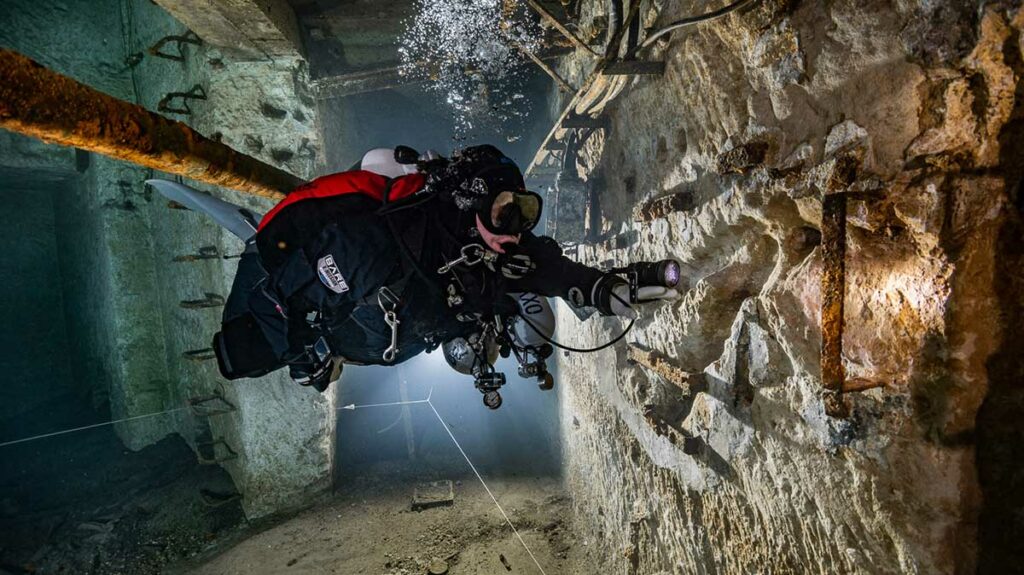
Diving in a drysuit requires additional training, which is why taking a drysuit specialty course is highly recommended. Unlike wetsuits, drysuits introduce new variables in buoyancy control, emergency procedures, and suit maintenance. Divers must master these to ensure a safe and enjoyable experience.
A drysuit course typically includes:
- Classroom and Theory Sessions: Understanding drysuit materials, maintenance, and repair techniques.
- Confined Water Training: Learning how to control buoyancy and practice emergency drills (such as recovering from an inverted position). Also, familiarize yourself with the suit’s inflation and exhaust system.
- Open Water Dives: Applying drysuit skills in real diving conditions under instructor supervision.
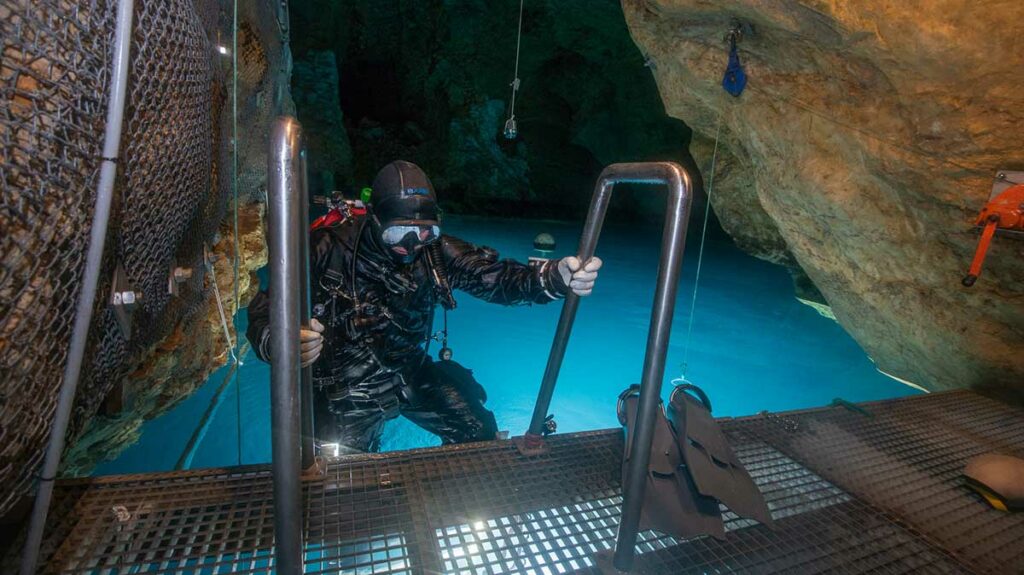
A structured course helps divers avoid common mistakes, such as over-inflation, improper weighting, or not maintaining seals properly. It also provides guidance on choosing the right undergarments for different water temperatures, ensuring maximum comfort and efficiency.
Drysuit diving is a game-changer for those looking to explore colder waters and extend their dive season. While it requires some additional training and practice, the benefits far outweigh the learning curve. With the right knowledge, equipment, and specialty training, divers can enjoy comfortable and safe experiences in a variety of challenging environments. Whether you’re interested in cold-water wreck diving, ice diving, or simply staying warm on longer dives, investing in a drysuit and the proper training is a decision that will significantly enhance your diving adventures.

